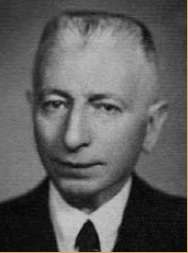Atıf Kamçıl
Atıf Kamçıl, also known as Atif Bey, Atif Efendi (1880–1947) was an Ottoman revolutionary and Turkish politician.
Atıf Kamçıl | |
|---|---|
 | |
| Born | 1880 |
| Died | 21 January 1947 Istanbul, Turkey |
| Citizenship | Ottoman, Turkish |
| Occupation | First Lieutenant (Mülâzım-ı Evvel), politician |
Biography
Young Turk Revolution and assassination of Shemsi Pasha
On 3 July 1908 Adjutant Major Ahmed Niyazi Bey deserted the Ottoman army, fled into the mountains with a guerilla band and initiated the Young Turk Revolution calling for the restoration of the constitution of 1876.[1] By July 7 1908, General Shemsi Pasha with one unit of volunteers and two army battalions reached Monastir (modern Bitola) by train and was tasked by Ottoman authorities to end the Young Turk (CUP) rebellion.[2][3][4] Shemsi and his military forces were viewed as a threat by the CUP Monastir branch and took the decision to assassinate Shemsi before he would begin his military campaign.[3] First Lieutenant Atıf Kamçıl, a CUP revolutionary[5][3] and member of the self sacrificing volunteer division of the CUP Monastir branch wrote later in life that he alone decided to assassinate Shemsi.[6] Kamçıl stated he asked the CUP Monastir branch for a gun and had talks about the matter with Süleyman Askerî, the branch's guide.[6] The director of the CUP Monastir branch, Lieutenant Colonel Sadik Bey (Șehreküștü) stated that it was only himself who gave the fatwa (order) for killing Shemsi.[6] In a telegram by the CUP Monastir branch they wrote that a "self sacrificing" volunteer himself wanted to undertake the task.[6]
During his stopover in Monastir Shemsi telegraphed the place regarding military operations.[2][3] As he left the telegraph office and went to enter the carriage Shemsi was assassinated in front of his Albanian bodyguards on July 7 by Atıf Kamçıl.[2][5][3] Kamçıl, as he fled from the location was wounded in the leg and later hid in the home of Lieutenant Mahmut Soydun.[3][7] The Albanian bodyguards of Shemsi had been swayed by the CUP to their side that during the incident they only shot their firearms into the air, did not chase after Kamçıl and later fled from the scene themselves.[3]
For the revolution the murder of Shemsi was a turning point that demoralised the palace and it removed a dangerous opponent for the CUP that could have mobilised Albanians in the Balkans against their forces.[4][3] The CUP gained a major advantage in the conflict as the assassination galvanised people to their cause.[8][9][10] Facing a deteriorating situation in the Balkans on July 24 sultan Abdul Hamid II restored the constitution of 1876.[8][9]
Post revolution
Following the revolution individuals like Kamçıl involved in assassinations went unpunished by the CUP and instead they were hailed as heroes and given important positions within the state.[11] Kamçıl became a deputy in the Ottoman Parliament representing Siirt and also the first director of the Ottoman State Tobacco Monopoly based in Çankırı.[7]
After the revolution, some rebels were sidelined in favour of more famous ones and CUP founder Ibrahim Temo felt that at times some peoples rights were violated with individuals being underappreciated like Atıf Bey, an important participant in the revolt.[12] Temo paid a publisher based in Vienna to produce 10,000 postcards with the image of Atıf Bey.[12] On postcards Atıf Bey appears in an image alongside Adem Bey and Çerçiz Topulli symbolising the cooperation of different communal groups of people involved in the revolution.[13]
Later with the establishment of the Turkish Republic Kamçıl served in the National Assembly as a deputy representing Çanakkale.[14] At the Hill of Eternal Freedom (Hürriyet-i Ebediye Tepesi) Kamçıl is buried as a hero of the Turkish state.[14]
References
- Gawrych 2006, p. 150.
- Gawrych 2006, p. 151.
- Hanioğlu 2001, p. 268.
- Zürcher, Erik Jan (2014). The Young Turk Legacy and Nation Building: From the Ottoman Empire to Atatürk's Turkey. I.B.Tauris. p. 32. ISBN 9780857718075.CS1 maint: ref=harv (link)
- Kansu, Aykut (1997). The Revolution of 1908 in Turkey. Brill. p. 91. ISBN 9789004107915.CS1 maint: ref=harv (link)
- Hanioğlu 2001, p. 472.
- Göçek 2014, pp. 192, 591.
- Gawrych, George (2006). The Crescent and the Eagle: Ottoman rule, Islam and the Albanians, 1874–1913. London: IB Tauris. p. 153. ISBN 9781845112875.CS1 maint: ref=harv (link)
- Hanioğlu, M. Șükrü (2001). Preparation for a Revolution: The Young Turks, 1902-1908. Oxford University Press. p. 273. ISBN 9780199771110.CS1 maint: ref=harv (link)
- Clayer, Nathalie (2007). Aux origines du nationalisme albanais: La naissance d’une nation majoritairement musulmane en Europe [The origins of Albanian nationalism: The birth of a predominantly Muslim nation in Europe]. Paris: Karthala. p. 607. ISBN 9782845868168.CS1 maint: ref=harv (link)
- Göçek 2014, p. 192.
- Özen 2017, p. 28.
- Özen, Saadet (2017). "The Heroes of Hürriyet: The images in Struggle". In Lévy-Aksu, Noémi; Georgeon, François (eds.). The Young Turk Revolution and the Ottoman Empire: The Aftermath of 1918. I.B.Tauris. pp. 30–31. ISBN 9781786720214.CS1 maint: ref=harv (link)
- Göçek, Fatma Müge (2014). Denial of Violence: Ottoman Past, Turkish Present, and Collective Violence against the Armenians, 1789-2009. Oxford University Press. p. 591. ISBN 9780199334216.CS1 maint: ref=harv (link)